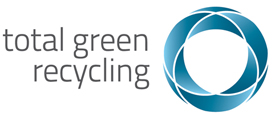Too often companies and governments assume recycling is the default option to dispose of end-of-life ICT equipment. And that’s regardless of whether the equipment is actually at the end of its product life. 
However, with the new Waste Avoidance and Resource Recovery Strategy 2030 in place, the priorities are now clear.
“The creation of a circular economy has the potential to harness the economic value of materials and drive investment in infrastructure and jobs.”
“The Australian waste sector contributes over $10 billion a year to the economy. Materials worth hundreds of millions of dollars are lost to landfill each year (ABS, 2014). High performing waste and recycling systems in which materials are recovered, reused and recycled can reduce this impact. The creation of a circular economy has the potential to harness the economic value of materials and drive investment in infrastructure and jobs.”*
Avoidance
The most effective way to reduce waste is to AVOID creating it in the first place. Making a new product requires a lot of materials and energy – raw materials must be extracted from the earth, and the product must be fabricated then transported to wherever it will be sold.
As a result, REDUCTION and REUSE are the most effective ways you can save natural resources, protect the environment and save money.
Recovery
Resource recovery is a process of extracting materials or energy from a waste stream through re-use, reprocessing, recycling or recovering energy from waste.
“Right now, Western Australia is close to leading the “wrong lists”. National figures from 2014–15 (the latest available as at September 2018) show Western Australia had the highest rate of waste generation per capita in the nation, and the equal second lowest rate of resource recovery – 13 percentage points below the national rate.”*
Why reuse and recovery of electronics come before recycling or disposal
- Refurbishing and reusing IT equipment can be up to 25 times better for the environment than recycling when considering the CO2-e emissions avoided in the mining, recycling and manufacturing processes used making new products.
- Recycling of electronics is a very complex and intensive process due to the high amount of equipment and resources required to effectively process the complex materials used in them. (Please watch this video of what our process of recycling e-waste look like.) Repairing and reusing devices is much less resource-intensive and also much more economical than recycling.
- Computers are not really getting any faster and laptops are not getting any thinner. In fact, the optimum thickness has already been reached so upgrading to the latest IT model has become more like a fashion statement. Many of us are prioritising form over function. Computers are supposed to be productivity tools, and we are being tricked into buying them like fashion accessories!
- Purchasing used ICT hardware rather than buying the latest-generation kit can mean significant savings (as much as 60%) for a business.
- Reusing old equipment reduces the amount of waste that will need to be recycled or sent to landfills and incinerators.
- Repair and Reuse are more environmentally friendly as it conserves energy and valuable resources. It also creates more green jobs than recycling.
So if your business has storage full of old IT equipment, get in touch so we can help you extract the remaining value and get these items to people who will give them a second life. You can see the list of our charity partners on our webpage.
